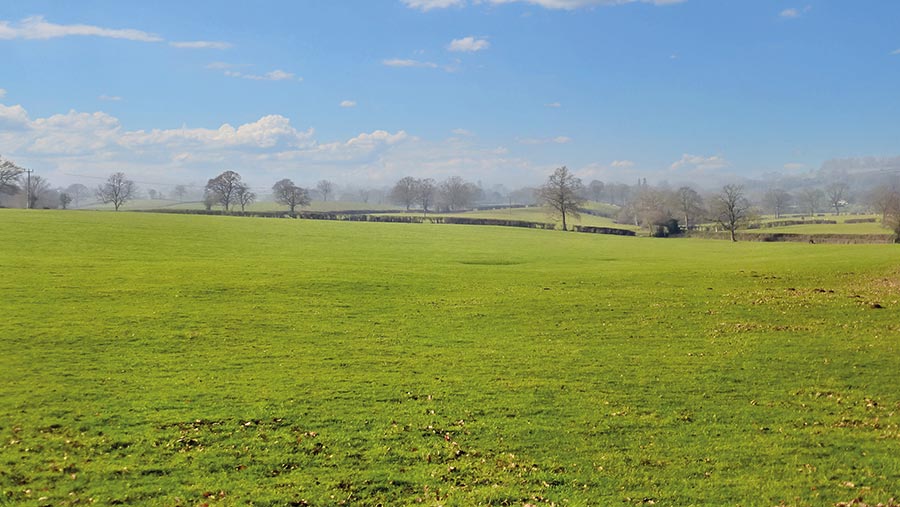Greening buyers make their presence felt in farmland market
Greening investment is a growing influence in the farmland market, and there have been some notable recent purchases and funding.
Oxygen Conservation agreed earlier this month to buy more than 4,450ha (11,000 acres) of the Buccleuch Estate’s Langholm Moor in Dumfries and Galloway.
This adds to the organisation’s existing portfolio of five areas of land stretching from Exmoor to the Firth of Tay, on which it aims to deliver positive environmental and social impact, including growing natural capital.
See also: Joint land ownership allows Dutch milk producer to extensify
Parts of the moor totalling more than 4,550ha (11,260 acres) had previously been sold to Newcastleton and District Community Trust and the much larger Langholm Initiative, which runs the Tarras Valley Nature Reserve on the moor.
In Somerset, rewilding charity Heal has spent £5.25m to buy its first land for a new nature reserve.
Insurer and pension provider Aviva is donating £38m to the Wildlife Trusts to support UK temperate rainforest expansion, re-establishing 2,100ha (5,200 acres) of habitat.
With high rainfall and humidity and a low annual variation in temperature, temperate rainforests account for less than 1% of the UK land area and are found in the Lake District, west Wales and west Scotland.
Aviva’s nature restoration investment is associated with storing carbon 20 years before the carbon associated with its potential future investments goes into the atmosphere, said The Wildlife Trusts.
Rewilding charity Heal buys first of many planned nature recovery sites
After three years of fundraising and with loans from insurer Direct Line and Triodos Bank, rewilding charity Heal has paid £5.25m for 186ha (460 acres) of land near Bruton in Somerset.
Describing the mainly heavy clay pastureland site’s potential for wildlife recovery as huge, the charity aims to create new jobs as well as work for local tradespeople and businesses.
Heal Somerset will offer public access across much its land, which will be stocked with rare-breed cattle, pigs and ponies in small numbers and natural regeneration of trees.
The Somerset land is also part-funded by Heal’s land sponsorship scheme through which, for £20, supporters can sponsor a 3m by 3m patch of land at Heal Somerset.
Heal aims to establish a major nature recovery site in all 48 English counties by 2050, covering almost 10,000ha (25,000 acres).
Competition for land
The growing interest in farm land for rewilding, carbon, biodiversity net gain and other environmental and social purposes is certainly providing competition for farmer buyers.
However, where land is on offer at scale, rollover and strong neighbour interest is generally paying at least as much as other buyer types, says Alice Keith, associate with Knight Frank’s farm and estates division.
Those buying for environmental purposes were less likely to want land with elements which they would see as complications, said Mrs Keith.
“They will generally want a strong element of control, so shooting rights held by a third party would be a negative, as would third-party access rights, and they will want to clear about access provisions to the land if there is no direct road access,” she said.
Multipurpose land for sale in Shropshire

© McCartneys
McCartneys is selling two blocks in south Shropshire by formal tender. The larger of the two, at Whitton, is 39.6ha (almost 98 acres) of Grade 2 and 3 land in ring fence just east of Ludlow.
Currently used for grazing, it has natural water, is accessible and suitable for arable cropping.
The nature of the land may offer biodiversity and natural capital opportunities, says McCartneys, which has set a guide price in the region of £29,650/ha (£12,000/acre).
More space for nature – an opportunity?
The recently released five-year Environmental Improvement Plan (EIP), containing initiatives to create more space for nature and improve water and air quality, has implications for the farmland market.
It includes creating 25 new or expanded National Nature Reserves, contributing to 500,000ha of new wildlife habitats.
The EIP also promises to ensure everyone is 15 minutes’ walk from a green space or water.
While there is no detail on how large those areas should be, this may offer opportunities to landowners or occupiers, says Knight Frank.
The plan also commits to increasing the woodland share of UK land from its current 13% to 14.8% in 2030 and 17% by 2050.
